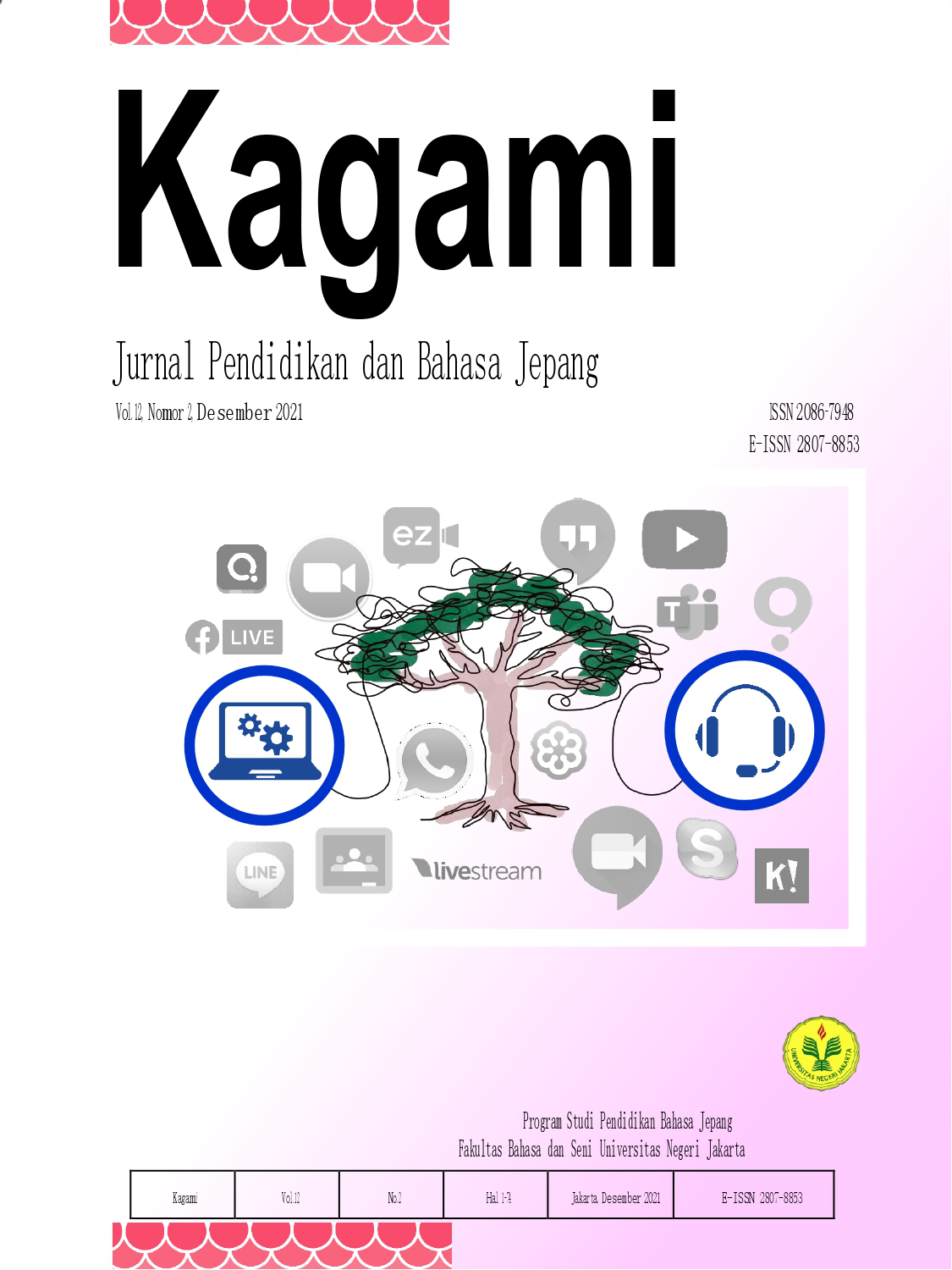PEMBENTUKAN KETERAMPILAN KOMUNIKASI DAN KOLABORASI MELALUI BUKU AJAR DOKUSAKU I
DOI:
https://doi.org/10.21009/kagami.141.01Keywords:
century skills, teaching materials, communication, collaborationAbstract
This study aims to find out how to build students' 21st century communication and collaboration skills through the use of the Dokusaku I textbook "Nobinobi Yomikaki". The emergence of the COVID-19 pandemic which affected learning activities greatly affected the skills of students. Meanwhile, the demand for skills in surviving the challenges of 21st century life is increasing rapidly. This is the background of this research, therefore the researcher conducts research on the formation of 21st century skills in students through textbooks that have been developed according to 21st century skills. The analysis in this study refers to the criteria for aspects of communication and collaboration skills put forward by Fadel and Triling, also based on the theory of communication and collaboration skills approach by Masukawa. The method used is observation and documentation, while the analysis technique used is descriptive qualitative. The findings from this study are the formation of communication and collaboration skills using the Dokusaku I textbook "Nobinobi Yomikaki". Communication and collaboration skills most often occur in the hanashiaimashou (let's discuss) sub-chapter, because this sub-chapter contains all the indicators of both skills. Not just talking, but fulfilling the essential criteria of communication and collaboration skills.
References
Erdoğan, V. (2019). Integrating 4c skills of 21st century into 4 language skills in efl classes. International Journal of Education and Research , 7(11), 113–124. www.ijern.com
Fullan, M. & Langworthy, M. (2014). A rich seam: how new pedagogies find deep learning. London: Pearson.
Germaine, R. et al. (2016). Purposeful use of 21st century skills in higher education. Journal of Research in Innovative Teaching, 9(1), 19-27. https://assets.nu.edu/
Kementerian Pendidikan dan Kebudayaan Republik Indonesia. (2020). Kemdikbud. (online). (https://www.kemdikbud.go.id/main/blog/2020/05/kemendikbud-terbitkan-pedoman-penyelenggaraan-belajar-dari-rumah, diakses 20 Februari 2023).
Lisa, N. W. N., Sujana, I. W., & Suadnyana, I. N. (2018). Hubungan antara sikap komunikatif sebagai bagian dari pengembangan karakter dengan kompetensi inti pengetahuan ips. Jurnal Penelitian dan Pengembangan Pendidikan, 2(2), 121-128. https://doi.org/10.23887/jppp.v2i2.15391
Masukawa, H. (2019). 第7回 21世紀型スキルのための授業づくり. Mirai no Manabi. (online). (https://mirainomanabi.up-edu.com/column/theme03/1384/, diakses 10 Maret 2023)
Partnership for 21 st century skills. (2015). Partnership for 21st century skills-core content integration. 1–70. www.P21.org.
Philiyanti, F. (2017). The impact of learning community in japanese reading learning model through contextual approach. Journal of Education and Practice, 8(32), 142–146. https://iiste.org/
Philiyanti, F., & Rismorlita, C. E., Hakim, R. F., dkk (2021). Kelayakan bahan ajar membaca bahasa jepang tingkat pemula berbasis keterampilan abad 21. Prosiding Seminar Nasional Bahasa, Sastra, Dan Seni 2021, 1, 77–82. http://journal.unj.ac.id/unj/index.php/prosiding_fbs/issue/view/1453
Setyorini. (2020). Pandemi covid-19 dan online learning : apakah berpengaruh terhadap proses pembelajaran pada kurukulum 13? Journal of Industrial Engineering and Management Research, 1(1), 95–102. https://doi.org/10.7777/jiemar.v1i1.31
Trilling, B., & Fadel, C. (2009). 21st century skills, enhanced edition: learning for life in our times. San Francisco: Jossey-Bass.
Downloads
Published
Issue
Section
License
Copyright (c) 2024 Balqis Syaifia, Frida Philiyanti, Dwi Astuti Retno Lestari

This work is licensed under a Creative Commons Attribution 4.0 International License.





